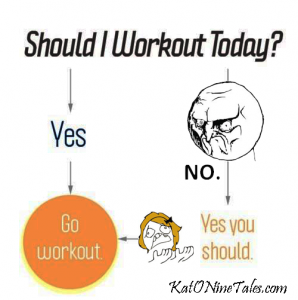My feet begrudgingly fell in front of each other as I jogged on the treadmill. Even with my favorite workout playlist, my cardiovascular exercise routine moved painfully slow. Spending 45-60 minutes on a treadmill, exercise bike, or elliptical submerged in a bubble of complete boredom was not my preferred method to lose weight and increase stamina. Additionally, like most other college students, I barely have any free time. My efforts to drop that extra few pounds were cutting deeply into my study time.
And then I discovered HIIT, or “High-Intensity Interval Training.”
 HIIT turns cardiovascular exercise, which is usually an aerobic activity, into a fast-paced, gruelingly difficult anaerobic exercise. Unlike normal cardio where one continuously performs the exercise for 30-45 minutes straight, HIIT includes short bursts of intense activity followed by periods of either rest or mild activity, and then repeating the cycle for anywhere between 5-40 minutes. Jumping rope, sprinting, jumping jacks, and all other usual means of performing cardiovascular exercise can be used in HIIT. The benefits? Less time spent exercising, and it turns out HIIT is better for promoting overall health than the usual 45-60-minute cardiovascular routines, formally known as “Steady-State Cardio. “
HIIT turns cardiovascular exercise, which is usually an aerobic activity, into a fast-paced, gruelingly difficult anaerobic exercise. Unlike normal cardio where one continuously performs the exercise for 30-45 minutes straight, HIIT includes short bursts of intense activity followed by periods of either rest or mild activity, and then repeating the cycle for anywhere between 5-40 minutes. Jumping rope, sprinting, jumping jacks, and all other usual means of performing cardiovascular exercise can be used in HIIT. The benefits? Less time spent exercising, and it turns out HIIT is better for promoting overall health than the usual 45-60-minute cardiovascular routines, formally known as “Steady-State Cardio. “
 One of the central mechanisms in cardiovascular exercise for promoting weight loss is the speeding up of the body’s metabolism. HIIT was shown to be more effective in this regard than continuous cardiovascular exercise in a study conducted by the Physical Activity Sciences Laboratory at Laval University in Quebec, Canada. Increasing the body’s metabolic rate has many benefits: more fat is burned, resistance to insulin is reduced, and skeletal muscles oxidize fat and utilize glucose (the body’s source of energy) more effectively.
One of the central mechanisms in cardiovascular exercise for promoting weight loss is the speeding up of the body’s metabolism. HIIT was shown to be more effective in this regard than continuous cardiovascular exercise in a study conducted by the Physical Activity Sciences Laboratory at Laval University in Quebec, Canada. Increasing the body’s metabolic rate has many benefits: more fat is burned, resistance to insulin is reduced, and skeletal muscles oxidize fat and utilize glucose (the body’s source of energy) more effectively.
So we’ve seen that HIIT not only consumes less time from our voraciously packed schedules, but it also can be better for our bodies than normal cardio in a multitude of ways. The elephant nevertheless remains in the room, being: How do we do HIIT?
One workout, taken from www.bodybuilding.com, prescribes 30 seconds of power walking, followed by 30 seconds of sprinting. This 1-minute cycle is performed eight times, resulting in an 8-minute workout. Certainly beats the insufferable 45-minute treadmill trek reminiscent of a lab rat’s existence! This routine can be modified to suit to any athlete’s stamina level. If you’re just starting out, perhaps do 2-3 cycles. If you’re an Olympic marathoner, move beyond eight cycles and do 10-12, or more. The 30 seconds of power walking could also be substituted for 30 seconds of jogging. The important aspect is a short interval of brutal exercise followed by a brief period of rest or mild exercise, lather, rinse, repeat.
The same time cycle just outlined can be used on an exercise bicycle, a jump rope, or with jumping jacks. In fact, to prevent the body from getting acclimated to one type of exercise, it would be optimal to do many sorts of exercise.
 High-intensity interval training is a fantastic way to drop those extra pounds gained over vacation that is more effective and takes less time than the tired, droll epochs spent on a treadmill or elliptical. Now you can look better, feel better, and have more time to cram for exams!
High-intensity interval training is a fantastic way to drop those extra pounds gained over vacation that is more effective and takes less time than the tired, droll epochs spent on a treadmill or elliptical. Now you can look better, feel better, and have more time to cram for exams!
 Randy studies neuroscience at Florida Atlantic University in Boca Raton, FL. He enjoys keeping up with the latest in scientific discoveries, listening to drum & bass music, and reading about alien abduction experiences. He can be e-mailed at rellis19@fau.edu.
Randy studies neuroscience at Florida Atlantic University in Boca Raton, FL. He enjoys keeping up with the latest in scientific discoveries, listening to drum & bass music, and reading about alien abduction experiences. He can be e-mailed at rellis19@fau.edu.

